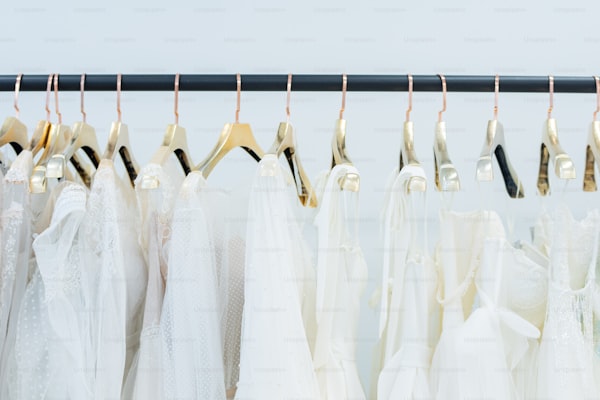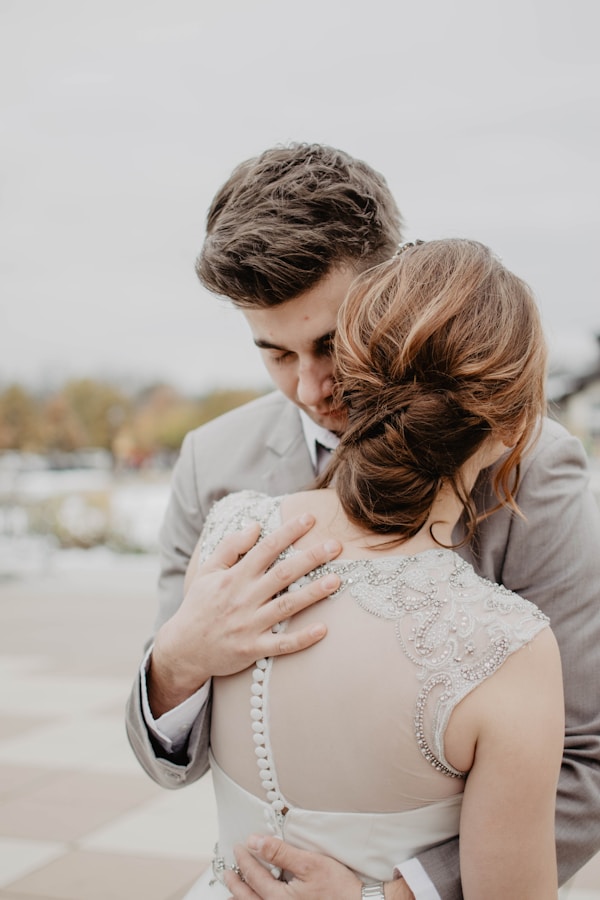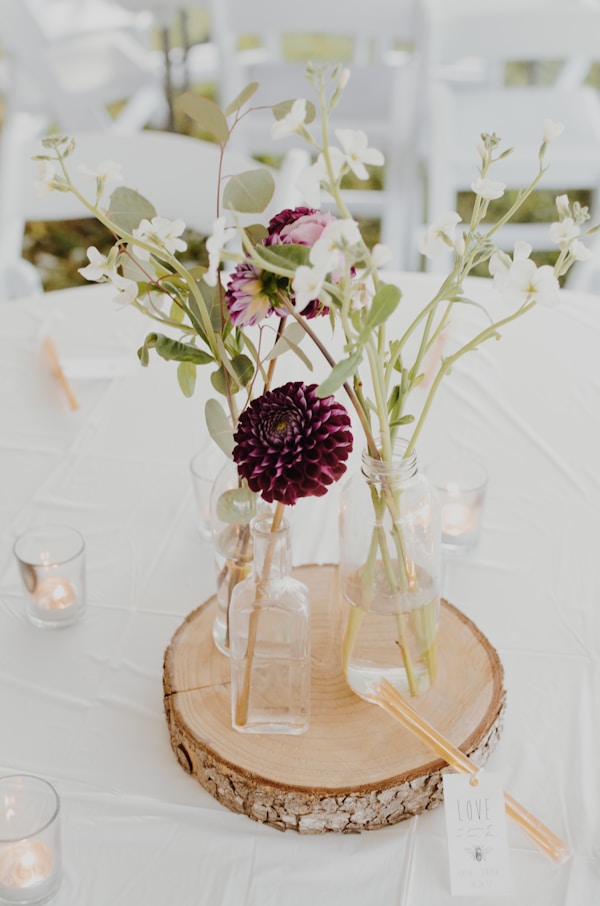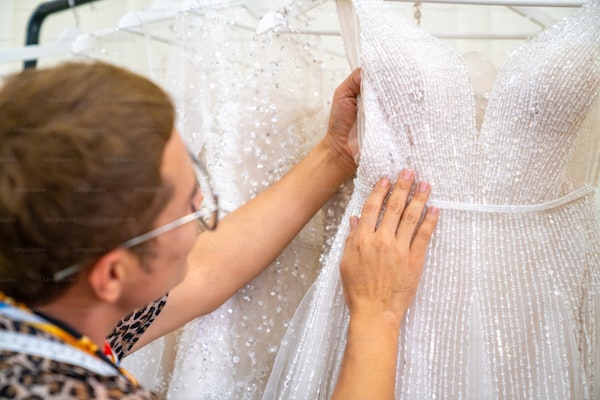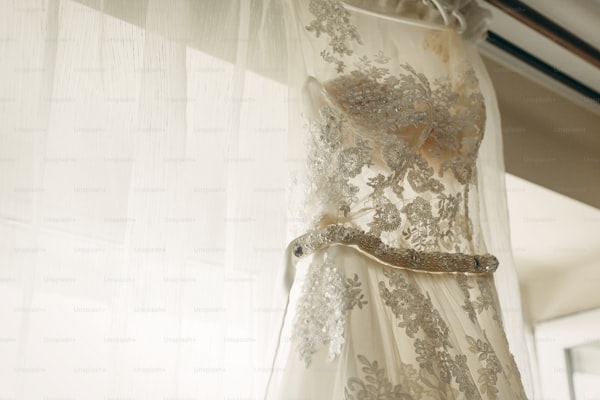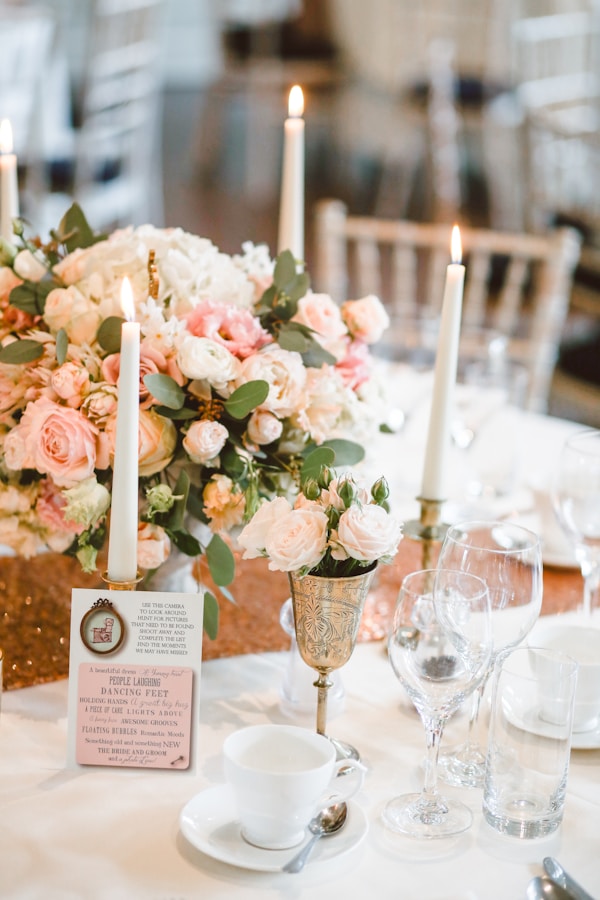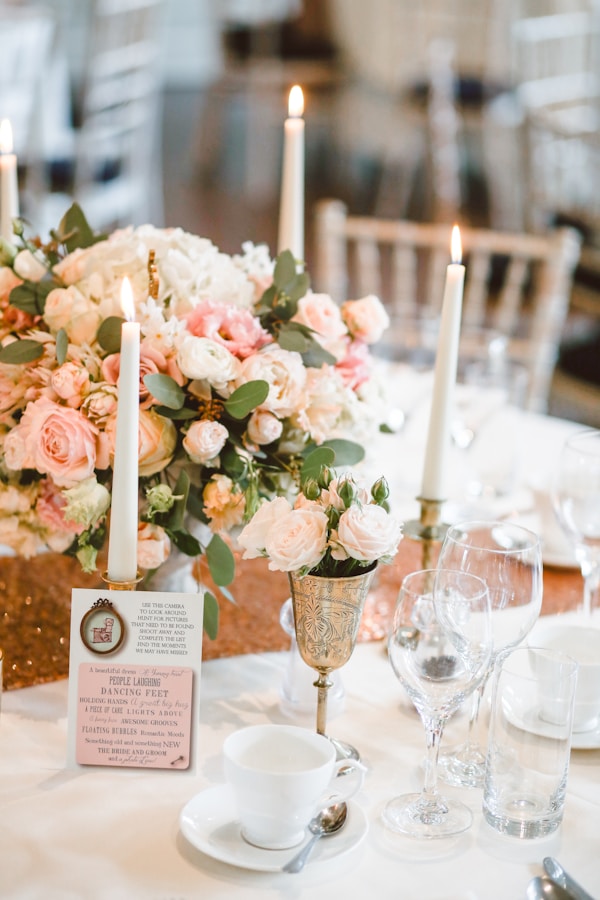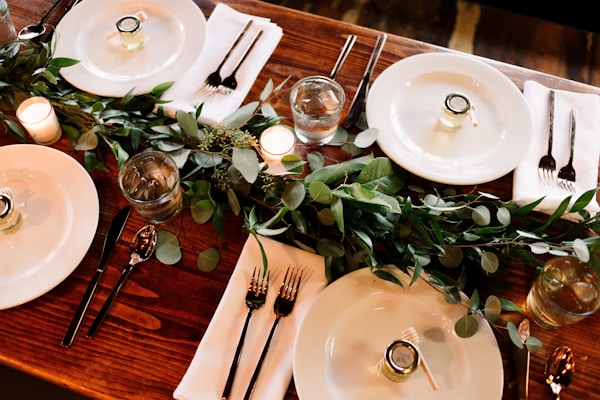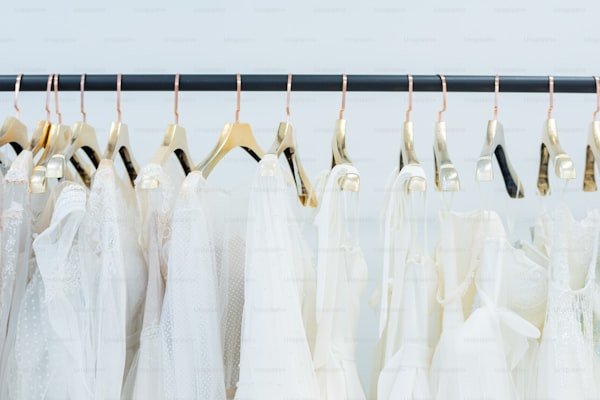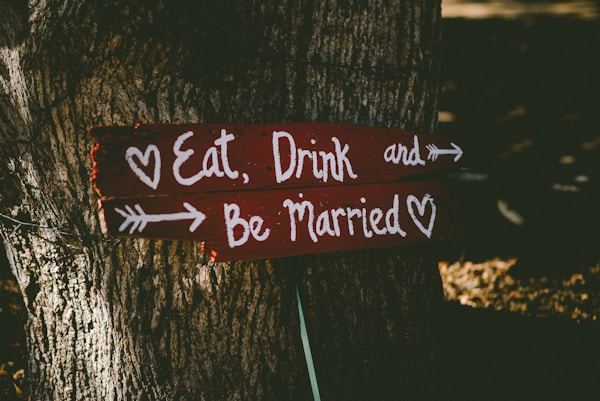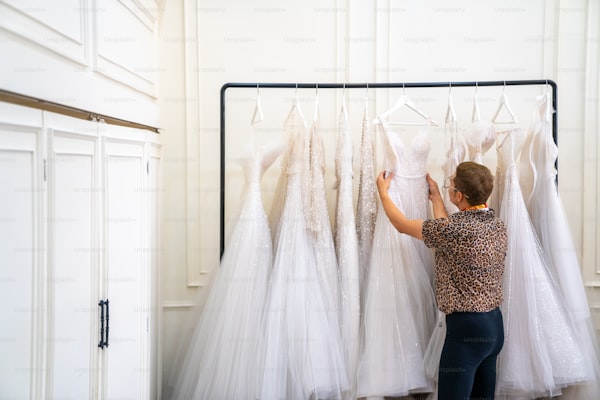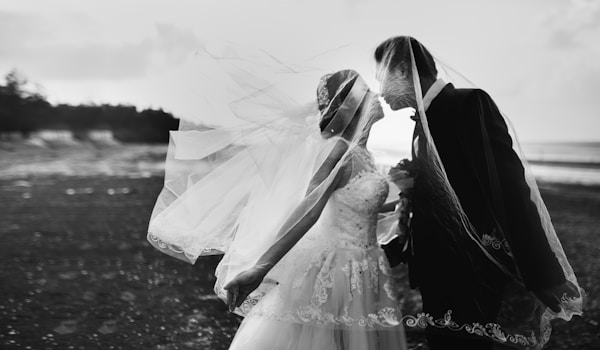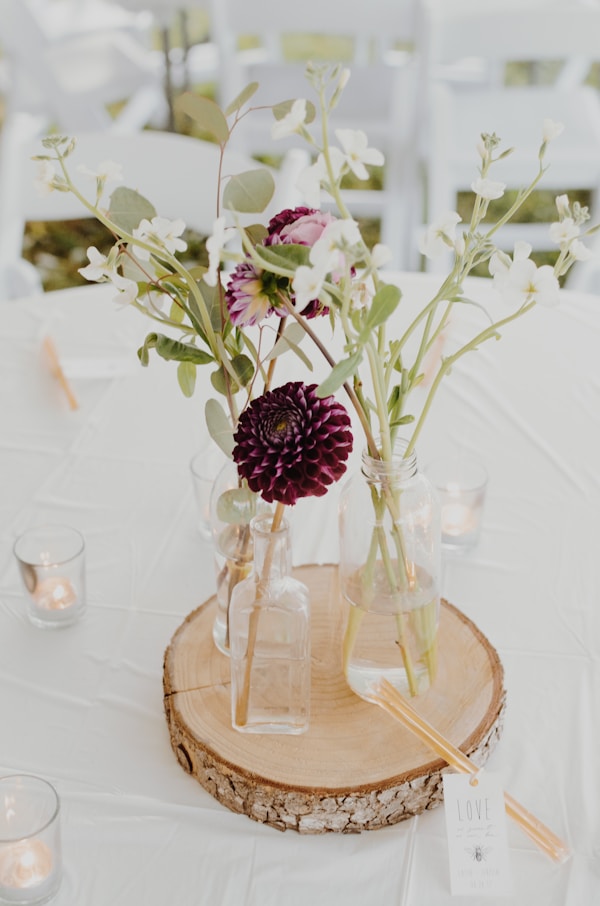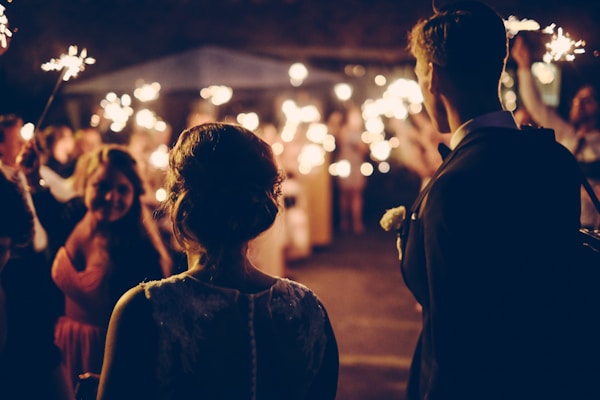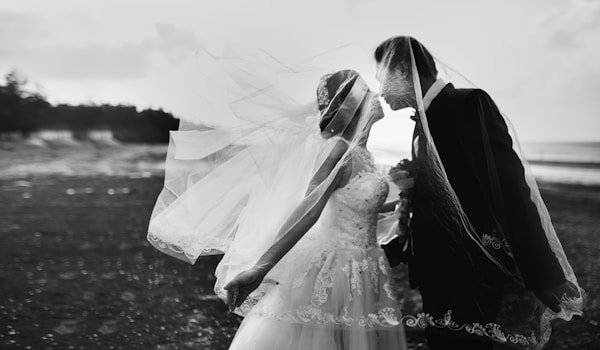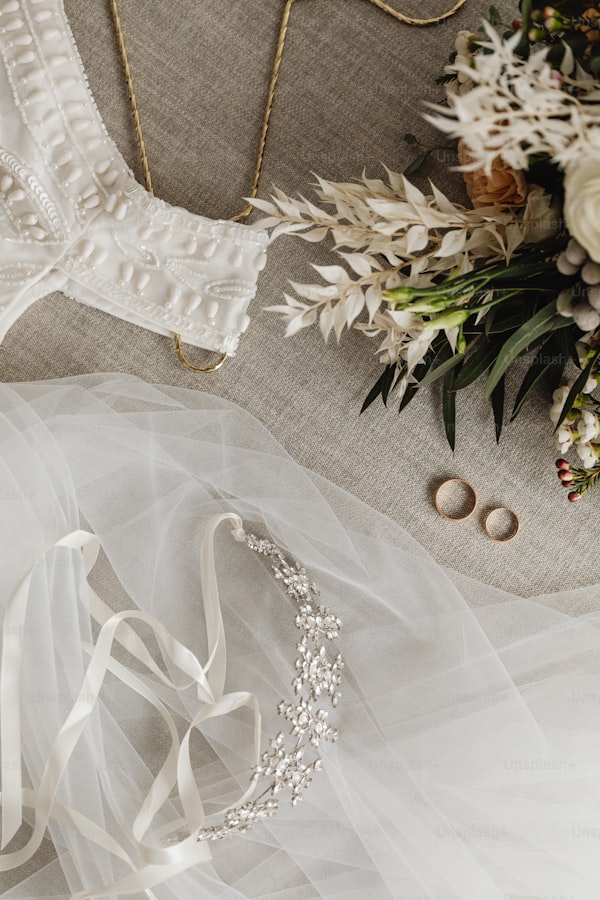How to Properly Store Your Wedding Dress for a Year or More: A Comprehensive Guide
IntroductionYour wedding dress is one of the most cherished items you will ever own. After your special day, you may want to store it safely for a year or even longer. Proper storage ensures that your dress retains its beauty, fabric, and overall condition. In this article, we will explore the best practices for preserving your wedding dress, including tips, common mistakes to avoid, and FAQs to help you navigate this journey.Why Proper Storage is ImportantA wedding dress is more than just a garment; it carries memories, emotions, and significance. Storing it improperly can result in irreversible damage, such as yellowing, fabric degradation, and permanent creases. Therefore, understanding how to store your wedding dress effectively is crucial.Step-by-Step Guide to Storing Your Wedding Dress1. Cleaning Your Wedding DressThe first step in preserving your wedding dress is to have it professionally cleaned. A professional cleaner with experience in wedding attire will use appropriate techniques to remove stains, dirt, and oils from your skin. Make sure to ask about the cleaning process and choose a cleaner who specializes in delicate fabrics.2. Choose the Right Storage MaterialOnce your dress is cleaned, you must choose the right storage materials. Avoid using plastic covers, as they can trap moisture and cause mildew. Instead, consider the following options: Acid-Free Box: An acid-free box provides a breathable space for long-term storage. They protect your dress from light ...
How to Properly Store Your Wedding Dress Before the Big Day: Essential Tips and Guidelines
IntroductionEvery bride dreams of looking stunning on her wedding day, and one of the most important elements of that vision is the wedding dress. However, storing your wedding dress before the wedding is just as crucial as choosing the right one. Improper storage can lead to unwanted creases, stains, or damage that may ruin your special day. In this article, we will explore how to store your wedding dress before the wedding, ensuring it looks perfect when you walk down the aisle.Understanding the Importance of Proper StorageYour wedding dress is likely one of the most expensive and cherished garments you will ever own. Proper storage protects it from dust, moisture, and light, which can cause discoloration and degradation over time. Here are some reasons why you should pay attention to this crucial step: Protects from Damage: Cotton and silk can deteriorate if not stored correctly. Maintains Cleanliness: Keeping your dress in a controlled environment prevents contact with dirt and substances that can stain it. Presents a Crisp Look: Proper folding and storage techniques maintain the ideal shape and design of your dress.Steps to Store Your Wedding Dress ProperlyHere is a step-by-step guide on how to store your wedding dress before your wedding. Follow these instructions for optimal care:1. Clean the DressThe first step in the storage process is ensuring your dress is clean. Any stains or dirt on the dress should be treated immediately. Professional dry cleaning is re...
Essential Guide: How Do I Store My Wedding Dress If My Wedding Is a Year Away?
Preparing for Your Wedding: Storing Your Dress SafelyYour wedding dress is not just an outfit; it’s a symbol of love, commitment, and one of the most significant days of your life. With a wedding planned a year away, it’s crucial to know how to store your wedding dress properly to ensure it remains in pristine condition. In this comprehensive guide, we will explore the best methods for storing your wedding dress, while also addressing frequently asked questions and tips for care.Why Proper Storage of Your Wedding Dress Is ImportantStoring your wedding dress correctly is essential to prevent damage caused by environmental factors such as dust, light, and moisture. Improper storage can lead to yellowing, fabric deterioration, and other irreversible damages that can spoil your big day. Here are some key factors to consider when storing your wedding dress: Prevention of Discoloration: Many fabrics may discolor if exposed to direct sunlight or artificial light over time. Preservation of Fabric: The material of your dress may be delicate and respond poorly to improper handling. Maintaining Shape: A dress needs to be stored in a way that maintains its shape and structure.How to Properly Store Your Wedding DressHere are step-by-step instructions on how to store your wedding dress safely:1. Cleaning Your Wedding DressBefore you store your wedding dress, it is best to have it professionally cleaned. This removes any stains or debris from your wedding day and ensures that no pa...
How Do I Care for My Wedding Dress Before the Wedding Day?
Your Ultimate Guide to Caring for Your Wedding DressGetting ready for your big day is both thrilling and overwhelming, especially when it comes to ensuring that your wedding dress looks pristine. How do I care for my wedding dress before the wedding day? The answer is multifaceted, encompassing everything from proper storage to cleaning tips. In this comprehensive guide, we will walk you through the essential steps to keep your beautiful gown in perfect condition, making sure you shine on your special day.Understanding Your Wedding Dress FabricBefore diving into maintenance, it is crucial to understand the fabric of your wedding dress. Each fabric has unique properties that influence how it should be cared for. Common fabrics include:Fabric TypeCare InstructionsSilkRequires gentle handling and should be stored in a breathable garment bag.LaceShould be treated delicately to avoid snagging; use a padded hanger.ChiffonBest stored flat to prevent creasing; avoid direct sunlight.OrganzaStore away from moisture and avoid pressing with high heat.Proper Storage MethodsAfter finding the perfect wedding dress, how do you ensure its preservation? Proper storage is key. Here are some effective techniques:1. Use a Breathable Garment BagYour first step in caring for your wedding dress is to use a breathable garment bag. Many bridal boutiques provide these bags, which prevent dust and moisture buildup. Avoid plastic bags, as they can trap moisture and lead to mildew.2. Store in a Dark, Cool...
Essential Best Practices for Wedding Dress Preservation: A Comprehensive Guide
Understanding Wedding Dress PreservationYour wedding dress is not just a garment; it represents one of the most beautiful days of your life. To ensure its beauty lasts for generations, it's essential to properly preserve it. So, what are some best practices for wedding dress preservation? This article will guide you through the most effective techniques to keep your dress in pristine condition.Why Is Wedding Dress Preservation Important?Wedding dress preservation protects your investment and sentimental value. A well-preserved dress can be handed down to future generations, allowing your family to relive the memories of your special day. Moreover, preserving your dress prevents yellowing, discoloration, and potential damage from environmental factors.Choosing the Right Cleaning MethodThe first step in preserving your wedding dress is choosing the right cleaning method. Here are several options to consider:Cleaning MethodDescriptionDry CleaningProfessional dry cleaning is ideal for most wedding dresses. Ensure the cleaner specializes in bridal wear to avoid damage.Spot CleaningFor minor stains, spot cleaning can effectively remove marks without the need for full cleaning.Hand WashingSome dresses made from delicate materials can be hand washed with mild detergent, but this should be done with care.When selecting a cleaning method, consider the fabric and construction of your dress. Avoid using harsh chemicals that could lead to discoloration or deterioration.Steps for Proper We...
Top Methods to Prevent Yellowing of White Wedding Dress Fabrics Over Time
Understanding Fabric Yellowing in Wedding DressesA white wedding dress is not just a piece of clothing; it is often a treasured memory, symbolizing love and commitment. However, over time, the beautiful, pristine fabric can develop unsightly yellow stains, which may ruin the overall aesthetic of the dress. In this article, we will explore what methods are used to prevent yellowing of white wedding dress fabrics over time, ensuring that your dress remains as beautiful as the day you wore it.The Causes of Yellowing in White FabricsTo effectively prevent yellowing, it's essential first to understand what causes it. Yellowing can be attributed to several factors: Environmental Factors: Exposure to sunlight, humidity, and temperature changes can degrade the fabric over time. Body Oils and Makeup: Natural oils from the body, along with cosmetics and deodorants, can cling to the fabric and cause discoloration. Improper Storage: Storing the dress in non-breathable materials or in damp conditions can contribute to fabric yellowing. Cleaning Methods: Using harsh chemicals during cleaning can lead to irreversible fabric damage.Effective Prevention MethodsNow that we know what causes yellowing, let’s delve into effective methods used to prevent it:1. Proper Storage SolutionsOne of the most crucial steps in maintaining the integrity of your wedding dress is how you store it. Here are some tips: Use Acid-Free Garment Bags: Store your dress in an acid-free cotton or muslin ga...
Ultimate Guide: Best Practices for Pressing and Steaming a Wedding Dress to Remove Wrinkles
IntroductionPlanning a wedding involves countless details, and one of the most important elements is making sure the wedding dress looks its best on the big day. One of the most common concerns for brides is ensuring their dress is free of wrinkles. After all, a perfectly pressed gown can enhance your overall appearance and photo opportunities. In this guide, we'll explore the best practices for pressing and steaming a wedding dress to remove wrinkles effectively. We'll also cover related topics such as the types of fabric used in wedding dresses, tips for storing a wedding dress, and other common questions brides may have.Understanding Different FabricsBefore diving into the pressing and steaming techniques, it's essential to understand that wedding dresses are made from a variety of fabrics, each requiring different care approaches. Some common materials include:Fabric TypeCare MethodSatinCan be ironed on a low setting with a pressing cloth.OrganzaShould be steamed carefully to avoid melting.LaceBest steam-cleaned to prevent damage.TulleCan be steamed but should be handled with care.SilkRequires a low-temperature iron or steamer.Best Practices for Pressing and SteamingNow that you understand the fabric types, let's delve into the best practices for both pressing and steaming. This will ensure your wedding dress maintains its beauty without risking damage.1. PreparationBefore you begin, make sure you gather the necessary tools:A high-quality garment steamerAn iron with adjus...
Ensuring Your Wedding Dress Maintains Its Color Over Time: Essential Steps and Tips
Understanding the Importance of Color Preservation for Wedding DressesYour wedding day is one of the most significant days of your life. A wedding dress plays a crucial role in this celebration, symbolizing beauty, love, and commitment. One concern many brides face is ensuring that their wedding dress maintains its color over time. In this article, we will explore the necessary steps and tips to keep your cherished gown looking as stunning as the day you wore it.Common Concerns About Wedding Dress Color PreservationWedding dresses often come in various shades, with white, ivory, and champagne being the most popular. However, environmental factors and improper care can lead to discoloration and yellowing over time. This section discusses the most common concerns related to wedding dress color preservation:Environmental Factors: Exposure to sunlight can fade fabrics, while humidity can promote mildew.Improper Cleaning: Using the wrong cleaning products or methods can damage fabric and alter color.Storage Conditions: Storing your dress in a non-breathable bag can cause it to yellow.Steps to Maintain Your Wedding Dress ColorMaintaining the color of your wedding dress involves careful attention to cleaning, storage, and periodic checks. Below are detailed steps you can take to ensure your dress remains vibrant for years to come:1. Choose the Right Cleaning MethodCleaning your wedding dress soon after the wedding is essential. Here are some tips for effective cleaning:Professional ...
How to Safely Store a Wedding Dress During Transport: Essential Tips to Avoid Damage
Transporting a wedding dress can be a nerve-wracking experience for brides-to-be. One of the most exciting moments leading up to a wedding is for a bride to finally receive her dress, but what happens during transport can significantly impact its condition. In this article, we will explore the best practices for how a wedding dress is stored during transport to avoid damage, ensuring that it arrives at its destination in pristine condition.The Importance of Proper Wedding Dress Transport MethodologyTransporting a wedding dress requires careful planning and execution. A wedding dress is usually a significant financial investment and holds sentimental value, representing one of the most memorable days in a person's life. Avoiding damage during transport is essential to ensuring that the dress looks perfect on the wedding day. Brides often wonder, "How is a wedding dress stored during transport to avoid damage?" This article will answer that question and more.1. Choosing the Right Transport MethodThe first step in safely transporting a wedding dress is selecting the right method of transport. Here are some options:Transport MethodDescriptionPersonal VehicleUsing a personal car ensures that the dress is handled with care and can be monitored during the journey.Taxi or RideshareOpting for services like Uber or Lyft can also provide flexibility but ensure the driver is informed about the dress.Professional Wedding Dress Transport ServicesSpecialized services exist that cater to wed...
Discover the Best Ways to Clean and Preserve Vintage Wedding Dresses
Understanding the Importance of Caring for Vintage Wedding DressesVintage wedding dresses are not just garments; they embody memories, emotions, and significant moments in our lives. Over time, however, these exquisite pieces can suffer from discoloration, stains, and fabric degradation. Therefore, knowing what are the best ways to clean and preserve vintage wedding dresses is essential for maintaining their beauty and longevity.Why Preservation MattersEach vintage wedding dress carries with it a unique history, often passed down through generations. Cleaning and preserving these dresses not only enhances their appearance but also safeguards their integrity for future enjoyment. Improper care can lead to irreparable damage, making it crucial to approach their maintenance with knowledge and sensitivity.Common Issues Faced by Vintage Wedding DressesIssueDescriptionYellowingOxidation and age can cause white or ivory fabrics to turn yellow.StainsFood, drink, and natural oils from the skin can leave stubborn marks.Fabric DegradationDelicate fabrics may weaken over time, especially if stored improperly.Cleaning Vintage Wedding Dresses: Step-by-Step GuideKnowing what are the best ways to clean and preserve vintage wedding dresses starts with understanding the cleaning process. Here, we outline a comprehensive method to ensure your dress is cared for correctly.1. Assess the Condition of the DressBefore you start cleaning, thoroughly inspect the dress. Look for any visible stains, tea...
Preserving Your Precious Memories: What Are the Best Ways to Store a Wedding Dress Long-Term to Avoid Damage?
For many brides, their wedding dress is more than just a piece of clothing; it represents a cherished moment in their lives. To ensure this special garment remains pristine for years to come, understanding the best methods to store a wedding dress long-term is crucial. Below, we’ll explore various techniques, considerations, and tips for maintaining your wedding dress, ensuring it stays as beautiful as the day you wore it.Why Proper Storage MattersWedding dresses are often made from delicate fabrics and intricate details that can be easily damaged. Whether it’s exposure to sunlight, dust, or improper handling, these factors can lead to discoloration, fabric deterioration, and even irreversible damage. Therefore, investing time in learning how to store your wedding dress properly is essential for preserving this sentimental item.Choosing the Right LocationWhere you decide to store your wedding dress plays a significant role in its preservation. Consider the following locations: Cool, Dry Place: Avoid areas with high humidity or extreme temperature changes, such as attics or basements. Dark Closet: Store your dress in a closet where it won't be exposed to sunlight, which can fade colors. Away from Heat Sources: Keep your dress away from heaters, radiators, or other heat-generating appliances.Preparing Your Wedding Dress for StorageBefore storing your wedding dress, it’s important to prepare it properly. Here’s how: Cleaning: Have your wedding dress professionally cleaned sh...
Essential Steps to Ensure Your Wedding Dress Retains Its Original Shape After Cleaning
Your Ultimate Guide to Preserving the Integrity of Your Wedding DressWedding dresses are not just garments; they are a symbol of love, commitment, and unforgettable memories. After the big day, it is crucial to clean and preserve your wedding dress properly to retain its original shape and beauty. This article explores the essential steps taken to ensure that a wedding dress maintains its form after cleaning, providing you with invaluable advice to protect your cherished attire.Understanding Wedding Dress MaterialsBefore delving into the cleaning process, it's important to understand the different materials commonly used in wedding dresses. Materials such as silk, satin, lace, and tulle require special care during cleaning to avoid damage or loss of shape. Below is a quick overview of these fabrics:Fabric TypeCare InstructionsShape RetentionSilkDry clean onlyNeeds careful handling to prevent stretchingSatinProfessional cleaning recommendedCan lose its luster if not treated properlyLaceHand wash with mild detergentMay require reshaping post-cleaningTulleGentle wash cycle or dry cleanProne to crumpling; needs fluffingSteps to Clean Your Wedding Dress1. Assess the DressThe first step in ensuring your wedding dress retains its original shape after cleaning is to thoroughly assess it. Check for stains, discolorations, or areas that may need special attention, such as the hem where it may have picked up dirt. Take note of any embellishments like beads or sequins; these can impact t...
Understanding Techniques to Maintain the Shape of Wedding Dress Fabrics Over Time
When it comes to a wedding, every detail matters, and your wedding dress plays a central role in creating that magical moment. One of the main concerns for brides is ensuring their wedding dress remains as beautiful as the day it was worn, especially regarding its fabric. What methods are used to ensure wedding dress fabrics do not lose shape over time? This is a critical question many brides ask, as the longevity of a wedding dress is paramount for those who wish to preserve it as a cherished keepsake.Common Wedding Dress FabricsBefore diving deep into the methods used for maintaining the shape of wedding dress fabrics, it's essential to understand the types of fabrics commonly used. Fabrics like satin, silk, lace, and tulle are favored for their elegance and grace in wedding attire. Each of these fabrics comes with its own set of characteristics that influence how they maintain their shape. Below is a brief overview:Fabric TypeCharacteristicsShape RetentionSatinSmooth with a slight sheen; luxurious feelHolds shape reasonably well, but can sag if not supportedSilkSoft, lightweight, and breathableCan lose shape over time if not handled carefullyLaceDelicate and intricate design; often overlayNeeds layering and backing to maintain structureTulleLight and airy netting; often used for skirtsHolds shape well, but can flatten easilyMethods to Maintain Fabric ShapeNow that we have a grasp on the various wedding dress fabrics, let’s explore the methods used to ensure that these fabr...
How to Prevent Wedding Dress Beads from Tarnishing: Essential Steps
Understanding the Importance of Beads in Wedding DressesWedding dresses are often embellished with beautiful beads that add a touch of elegance and sophistication. However, over time, these beads can tarnish, losing their luster and ruining the overall look of the gown. This article explores what steps are taken to prevent wedding dress beads from tarnishing over time, ensuring that brides can keep their cherished dresses in pristine condition for years to come.Why Do Wedding Dress Beads Tarnish?Before diving into the preventive measures, it is essential to understand why wedding dress beads tarnish. Tarnishing is primarily caused by chemical reactions between the metal in the beads and environmental factors. Common culprits include: Moisture Air pollutants Perfumes and lotions Oil from skinUnderstanding these factors is crucial as it helps brides take proactive measures to avoid tarnishing.Preparing Your Wedding Dress for Safe StorageOne of the most critical steps in preventing tarnish is ensuring that the wedding dress is correctly prepared and stored after the big day. Here are steps you can follow: Choose the Right Cleaners: It’s important to use cleaners specifically designed for wedding dresses. They are formulated to remove stains without damaging delicate beads. Avoid Harsh Chemicals: Stay away from bleach or other harsh cleaning agents, as they can lead to corrosion. Dry Cleaning: Consider professional dry cleaning before storage. This helps remo...
How to Maintain the Quality of Wedding Dress Materials During Storage and Transport
The Importance of Quality in Wedding Dress MaterialsWedding dresses are often one of the most significant investments a bride makes for her special day. With countless hours spent choosing the perfect dress, the quality of materials used in its creation is crucial. However, once the dress is selected, the next challenge becomes maintaining the quality of the wedding dress materials during storage and transport. In this article, we will explore effective strategies for ensuring that your wedding dress remains in pristine condition.Understanding the Types of Materials Used in Wedding DressesBefore diving into storage and transport methods, it's essential to understand the various materials commonly used in wedding dresses. Here are some popular fabrics:Fabric TypeCharacteristicsSatinLuxurious and smooth, but can easily wrinkle.LaceDelicate and intricate, requires special care.ChiffonLightweight and flowing, can be prone to snagging.TulleSheer and lightweight, often used for layers.OrganzaCrisp and structured, can be fragile at seams.Each fabric type has its unique characteristics, demanding specific care techniques to preserve its quality. Understanding these differences is the first step in ensuring your wedding dress remains beautiful throughout storage and transport.Proper Storage Techniques1. Clean Your Wedding DressBefore storing your wedding dress, it is crucial to have it professionally cleaned. This is especially important for fabrics like satin and silk that can stain ...
Ultimate Guide: Best Practices for Storing Wedding Dresses to Prevent Yellowing
Preserving Your Cherished Wedding DressYour wedding dress is one of the most important garments you will ever own. It symbolizes joy, love, and one of the most significant days of your life. However, if not stored properly, it can succumb to yellowing over time, diminishing its beauty and sentimental value. In this article, we will explore the best practices for storing wedding dresses to prevent yellowing, ensuring that your dress remains as pristine as the day you wore it.Understanding Yellowing in Wedding DressesBefore delving into the best storage practices, it's essential to understand what causes yellowing in wedding dresses. Natural fibers, like silk and linen, are particularly susceptible to yellowing due to factors like exposure to light, moisture, and even body oils from when the dress was worn. Over time, these elements can lead to irreversible discoloration.Common Causes of YellowingCauseDescriptionStorage ConditionsExcessive light and humidity can accelerate yellowing.Detergents and ChemicalsResidues from detergents or sprays can react with the fabric.Body Oils and PerfumeContact with skin oils and cosmetics can stain the fabric.Best Practices for Storing Wedding DressesNow that we understand what contributes to yellowing, let's explore effective strategies to store your wedding dress correctly.1. Clean Your Dress Before StoringBefore storage, have your wedding dress professionally cleaned to remove any stains, oils, or residues that can contribute to yellowing. ...
What Are the Best Practices for Cleaning and Preserving a Vintage Wedding Dress?
Preserving a vintage wedding dress is not merely about keeping a piece of fabric; it's about safeguarding memories, stories, and emotions woven into the seams. Whether your vintage dress is a family heirloom or a find from a thrift store, maintaining its beauty and integrity requires careful planning and execution. In this comprehensive guide, we will explore the best practices for cleaning and preserving a vintage wedding dress.Understanding Your Vintage Wedding DressBefore you start the cleaning process, it is essential to understand the materials and construction of your dress. Vintage wedding dresses can be made from various fabrics, including silk, lace, satin, and tulle, each requiring different care approaches. Common issues in vintage dresses include: Stains: Yellowing, water stains, or other discolorations. Delicate Fabrics: Lace and silk can be fragile and require gentle handling. Seams and Embellishments: Beads, sequins, and embroidery may need special attention.Initial AssessmentWhen you first acquire or decide to clean your vintage wedding dress, conduct a thorough assessment. Look for: Visible stains and discolorations Signs of wear and tear, such as frayed edges or loose seams Overall fabric conditionBest Practices for Cleaning a Vintage Wedding DressOnce you have assessed the condition of your dress, the following cleaning techniques can help maintain its integrity:1. Spot CleaningFor minor stains, a bit of spot cleaning can be effective. Use...
How to Prevent Discoloration of Wedding Dress Fabrics During Storage: Essential Tips and Tricks
Your wedding dress is not just a piece of clothing; it holds sentimental value and represents one of the most cherished moments of your life. Therefore, it's crucial to take proper care of it, especially during storage. One significant concern is the discoloration of wedding dress fabrics. In this article, we will explore how to prevent discoloration of wedding dress fabrics during storage and provide the best practices for maintaining your dress's beauty for years to come.Understanding Discoloration in Wedding DressesDiscoloration can occur for several reasons, such as exposure to light, humidity, temperature fluctuations, and improper cleaning. Different fabrics react differently to these conditions, making it necessary to understand the material of your wedding dress. Common fabrics include:FabricCommon Discoloration IssuesRecommended CareSatinYellowingStore in a breathable garment bagLaceFading & StainsAvoid direct sunlight & clean gentlyTulleYellowing & StiffnessKeep in a cool, dark placeStep-by-Step Guide to Prevent Discoloration1. Proper CleaningBefore storing your wedding dress, ensure it’s thoroughly cleaned. This step is essential as any stains left behind can lead to further discoloration over time. It's advisable to have it professionally cleaned by a specialist experienced in handling bridal wear. If cleaning at home, use a gentle fabric-specific detergent and take extra care with delicate areas such as lace or beadwork.2. Choose the Right Storage ContainerUsing ...
How to Ensure Your Wedding Dress Stays in Pristine Condition During Transportation
IntroductionYour wedding day is one of the most significant events in your life, and it deserves every ounce of care and attention. One of the essential elements of your big day is your wedding dress. Transporting it safely to your venue is crucial to maintaining its pristine condition. But how do you ensure a wedding dress stays in pristine condition during transportation? Here, we will explore the best practices, tips, and important considerations to keep your gown looking flawless.Understanding the RisksBefore we delve into the solutions, it's important to understand the risks involved in transporting a wedding dress. Various factors can affect its condition, including: Environmental factors: Temperature, humidity, and exposure to sunlight can damage fabric. Physical damage: Scrapes, tears, or crushing can occur if the dress is not handled properly. Stains: Spills or dirt can easily mar the fabric and be difficult to remove later.Best Practices for Safe TransportationTo ensure your wedding dress remains in pristine condition during transportation, follow these best practices:1. Choose the Right Garment BagInvest in a high-quality garment bag made from breathable material. Look for one that is padded and specifically designed for wedding dresses, as it will provide better protection. Avoid plastic bags, as they can trap moisture and lead to mold or mildew.2. Prepare Your DressBefore placing your dress in the bag, make sure it is clean and dry. If you’ve recently ha...
Ensuring Your Wedding Dress Fabric Stays Flawless in Every Light
Understanding Wedding Dress Fabrics and Their Lighting SensitivityChoosing a wedding dress is one of the most crucial decisions for any bride-to-be. Not only does it represent a beautiful moment in your life, but it also involves selecting the perfect fabric that will remain stunning under various lighting conditions. In this article, we’ll delve into how you can ensure a wedding dress fabric does not discolor under different lighting, and the factors you should consider when making your choice.The Importance of Fabric SelectionFabric choice is central to the aesthetic appeal of your wedding dress. Some fabrics can appear vibrant and flawless in daylight but may present issues under artificial lighting during evening receptions. Here are several common wedding dress fabrics and their behavior under different lighting:Fabric TypeLighting SensitivityColor RetentionSatinCan appear shiny, reflecting light and creating unwanted glare.Prone to fading when exposed to bright lights for prolonged periods.TulleLight and airy, typically maintains its color.Less prone to discoloration but can be affected by direct light.ChiffonSoft and flowing, may lose vibrancy under dim lights.Requires careful handling to preserve color integrity.LaceCan cast shadows under bright lighting.Typically retains color well but can create visual discrepancies.Factors to Consider When Choosing Wedding Dress Fabrics1. Understanding How Light Affects FabricLight quality and type fundamentally influence how color...
